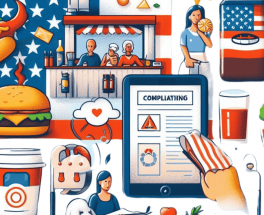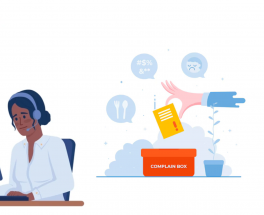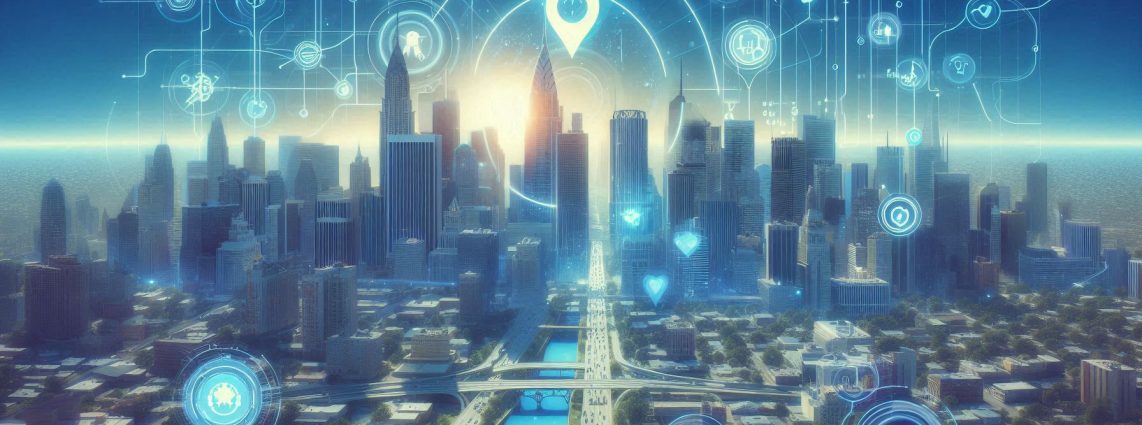In today’s digital era, Artificial Intelligence (AI) isn’t just a buzzword—it’s revolutionizing customer service across the United States. From bustling metropolitan areas like New York and San Francisco to emerging tech hubs in the Midwest, cities harness AI to deliver unparalleled customer satisfaction. In this blog, we’ll explore how different U.S. cities are at the forefront of this transformation and showcase real-world use cases demonstrating the power of AI in elevating customer experience.
The Rise of AI in Customer Experience
Why AI Matters
AI technologies—ranging from chatbots and virtual assistants to advanced data analytics—fundamentally reshape how companies interact with their customers. By leveraging the recent advances in AI (Large Language Models, Small Language models, AI Applications related to Customer Service, etc), businesses can now provide:
- Instant support and 24/7 availability: Chatbots and virtual assistants handle inquiries around the clock, reducing wait times and improving overall satisfaction.
- Personalized experiences: AI systems analyze customer data to offer tailored recommendations and solutions.
- Efficient operations: Automated workflows and intelligent systems minimize human error and streamline service delivery.
- Integrated Customer Experience: Easily accessible intelligent Web solution that caters to Customer complaints, and feedback via Surveys, Polls and Reviews
These capabilities are driving a new era of customer satisfaction, especially in tech-savvy urban centers across the U.S.
Mapping AI Adoption in Major U.S. Cities
Geographic Trends and Hotspots
US cities with a strong tech presence or innovative business climates are leading the charge in AI adoption:
- New York City: With its dense population and competitive retail and financial sectors, NYC is leveraging AI to manage high volumes of customer inquiries and deliver personalized services.
- San Francisco: As the heart of the tech industry, San Francisco is home to numerous startups and established companies pushing the envelope in AI-driven customer experiences.
- Chicago: Emerging as a Midwest innovation hub, Chicago is using AI to transform traditional industries like manufacturing and retail.
- Austin: Known for its vibrant tech community, Austin companies are integrating AI to boost customer satisfaction in sectors such as hospitality and entertainment.
Recent surveys and research studies highlight a significant correlation between AI adoption and improved customer satisfaction. Cities investing heavily in AI technology tend to enjoy higher customer satisfaction ratings. Companies in these regions report benefits such as reduced wait times, improved resolution rates, and increased overall engagement.
Real-World Use Cases
-
New York City
A> A leading department store in NYC implemented an AI-powered chatbot system to manage customer inquiries both online and in-store. The results were remarkable:
- Response Time: Decreased by 70%
- Customer Satisfaction: Increased by 20%
- Operational Efficiency: Allowed staff to focus on complex issues rather than routine queries
B> AI-Enhanced 311 Services : New York City’s 311 system uses AI and machine learning to analyze citizen reports and service requests. This data-driven approach helps city officials identify recurring issues, optimize resource allocation, and proactively address public concerns.
How It Works:
- Natural Language Processing (NLP) is used to interpret citizen inquiries received via phone, web, or social media.
- Machine Learning algorithms categorize and prioritize service requests, routing them to the appropriate city department.
Impact:
- Reduced response times and improved efficiency.
- More accurate routing of issues, leading to quicker resolutions and higher citizen satisfaction.
-
Austin
A boutique hotel chain in Austin integrated AI for personalized guest experiences. The system:
- Analyzed guest preferences from past stays and social media
- Provided tailored recommendations for local attractions and dining
- Resulted in a 15% increase in repeat bookings and enhanced online reviews
-
San Francisco
A> A fintech startup in San Francisco used AI to streamline customer onboarding and support. By automating the verification process and offering immediate responses to queries:
- Onboarding time was reduced by 40%
- Customer retention improved significantly
- Support costs were cut by nearly 30%
B> Digital Government and AI-Driven Customer Support:– San Francisco has set the stage for a smart city by integrating AI into various public service channels and partnering with local tech innovators.
How It Works:
- Virtual Assistants and Chatbots: These tools help residents access a wide range of services, from utility management to permit applications, all through natural language interfaces.
- Data-Driven Service Enhancements: AI systems analyze usage data to continuously refine service delivery, ensuring that citizen concerns are addressed efficiently.
Impact:
- Increased accessibility and transparency in government services.
- A more responsive and personalized customer experience for residents.
-
Chicago
AI in Public Safety and Urban Engagement – Chicago is leveraging AI for predictive analytics in public safety and to streamline communications with its residents.
How It Works:
- Predictive Policing and Incident Mapping: AI tools analyze historical data to predict where incidents are more likely to occur.
- Citizen Feedback Platforms: AI-driven platforms analyze feedback from multiple channels to identify trends in public satisfaction.
Impact:
- More proactive public safety measures.
- Improved allocation of resources and faster response times, leading to greater public trust and satisfaction.
-
Los Angeles
Smart Traffic and Customer Communication
Overview: Los Angeles is employing AI-driven systems to improve both urban mobility and citizen interaction.
How It Works:
- Real-Time Data Analysis: AI algorithms analyze traffic patterns from sensors and cameras, optimizing traffic signal timings.
- Public Communication: Integrated digital signage and mobile notifications keep commuters informed of changes and delays.
- Chatbots and Virtual Assistants: These tools help residents navigate transit options and provide feedback on service performance.
Impact:
- Enhanced travel experience through timely, accurate information.
- Reduced congestion and improved overall satisfaction with city transportation services.
6. Private Sector Partnerships – Mapping the Ecosystem
Many U.S. cities are not working in isolation. They have partnered with private sector leaders to further drive AI adoption in customer service:
- Bank of America in Charlotte and Beyond:
With its AI assistant Erica, the bank offers personalized financial services that reduce customer wait times and improve satisfaction.
- Delta Air Lines in Atlanta:
AI-powered support systems manage everything from ticketing inquiries to real-time flight updates, enhancing the traveler’s journey.
- AT&T in Dallas:
AI-driven call routing and sentiment analysis have modernized their customer service operations, setting a benchmark for other industries.
Mapping America’s AI-Driven Customer Experience
When these use cases are visualized on a map, you can see clusters of innovation:
- Major metropolitan hubs like New York, Los Angeles, and San Francisco lead in public sector innovation.
- Collaborations with private companies extend these benefits across industries, making cities overall better places to live and work.
- Continuous improvement through real-time analytics and AI-driven insights is creating a dynamic ecosystem where customer experience is constantly evolving.
These real-world examples demonstrate that U.S. cities are not only embracing AI technologies internally but are also catalyzing broader changes through partnerships with private sector innovators. By mapping these initiatives, one can see a clear trend: cities are leveraging AI to drive efficiency, enhance citizen satisfaction, and set new benchmarks for customer experience in both public and private sectors. This revolution is ongoing, with future developments poised to further transform how urban services are delivered in America.
The Future: A Roadmap for AI in Customer Experience
What’s Next?
As AI technology continues to evolve, we can expect further enhancements in customer experience, including:
- Deeper personalization: With more advanced data analytics, AI will offer hyper-personalized recommendations.
- Predictive service: Anticipating customer needs before they arise, leading to proactive support.
- Omni-channel integration: Seamless customer interactions across various platforms, creating a unified experience.
Strategies for Businesses
For companies looking to harness AI to improve customer satisfaction, consider the following strategies:
- Invest in Data Infrastructure: A robust data system is essential for effective AI integration.
- Prioritize User Experience: Ensure that AI solutions are user-friendly and genuinely enhance the customer journey.
- Monitor and Adapt: Continuously track performance metrics and customer feedback to refine AI strategies.
Conclusion
The transformation of customer experience through AI is not a distant dream—it’s happening now, especially in America’s leading cities. By adopting innovative AI solutions, businesses are not only enhancing operational efficiency but also driving unprecedented levels of customer satisfaction. Whether you’re in Austin or in New York, the AI revolution is here, and its impact is measurable.
Embrace the future of Customer Experience, explore the power of AI, join an integrated CX platform like Cechoes.com and be part of the revolution that is reshaping Customer Experience across the nation.








Your Comment